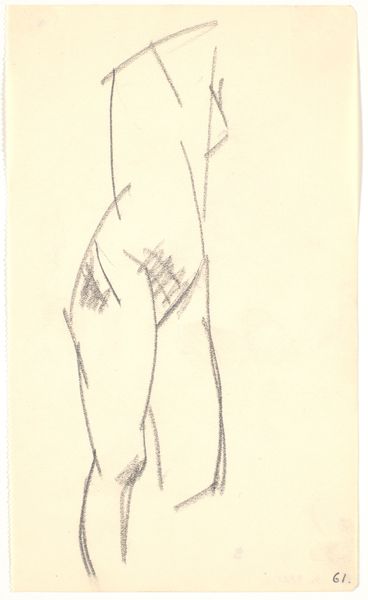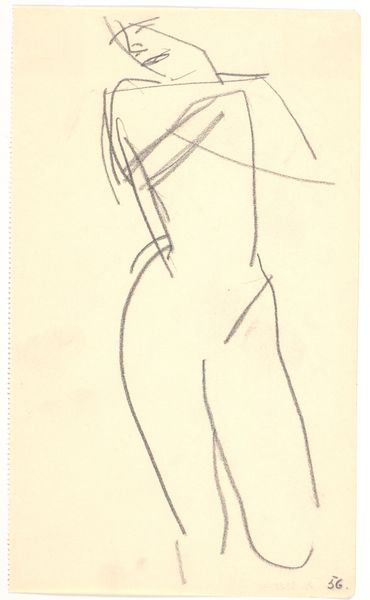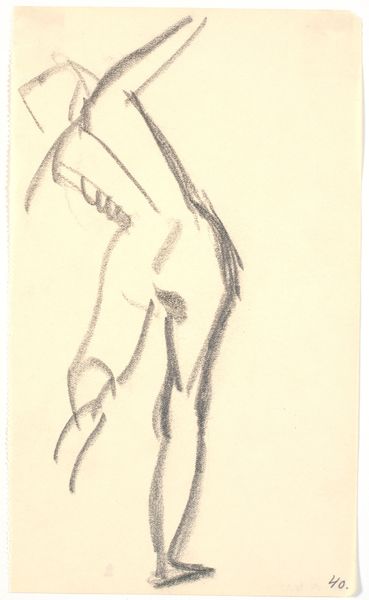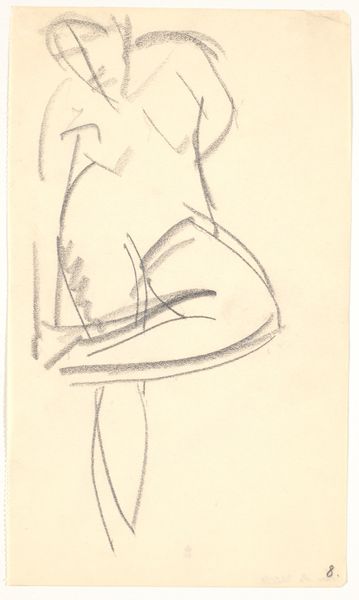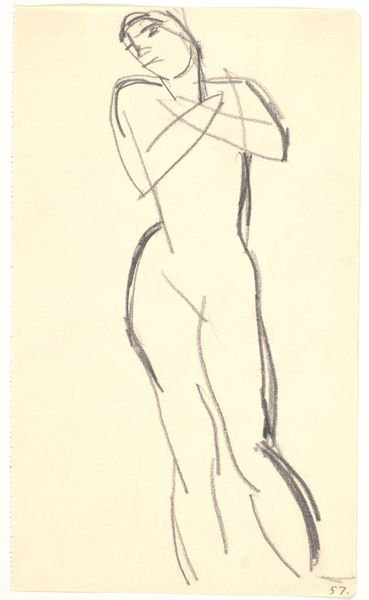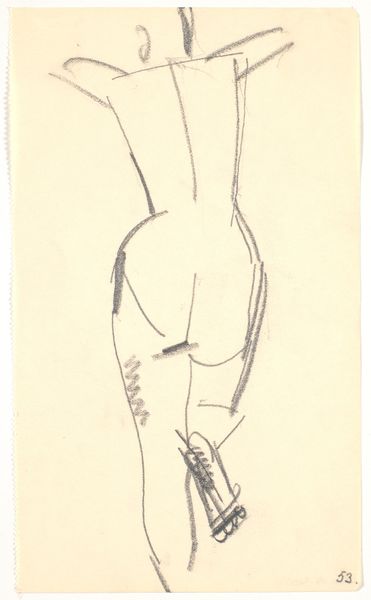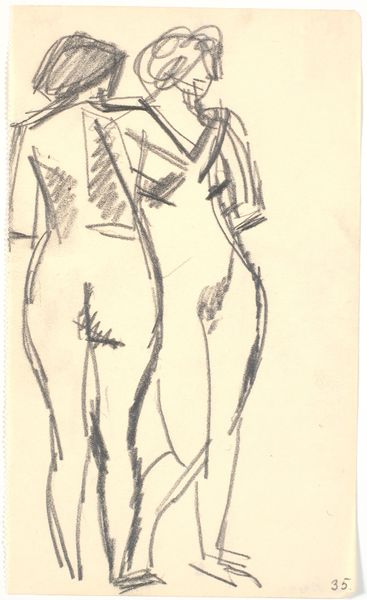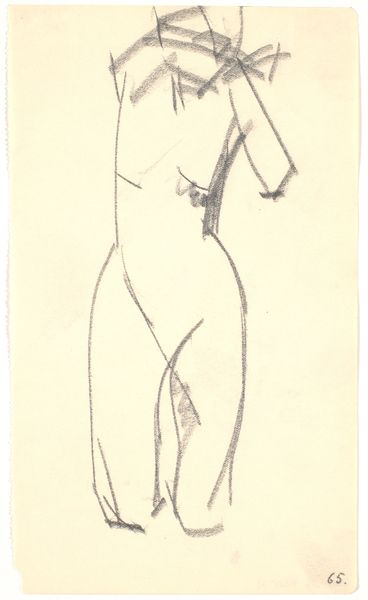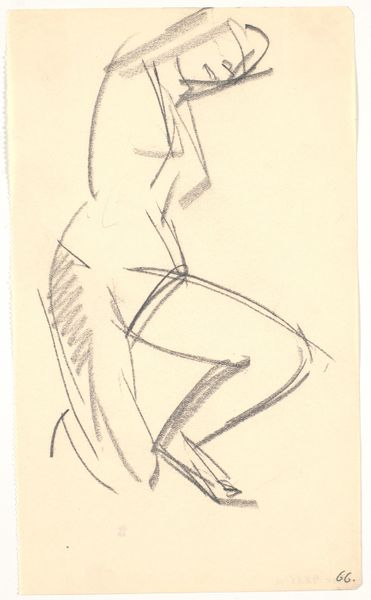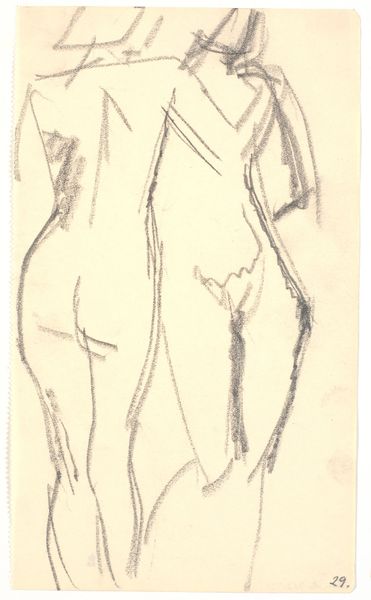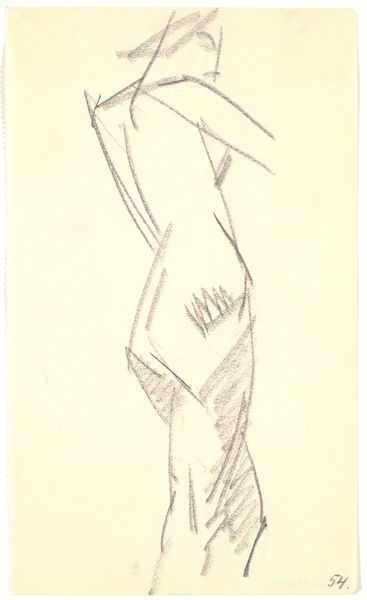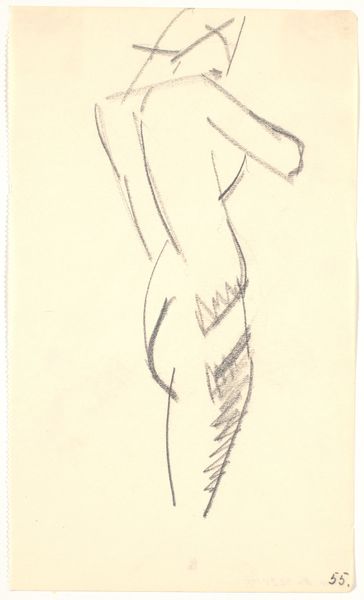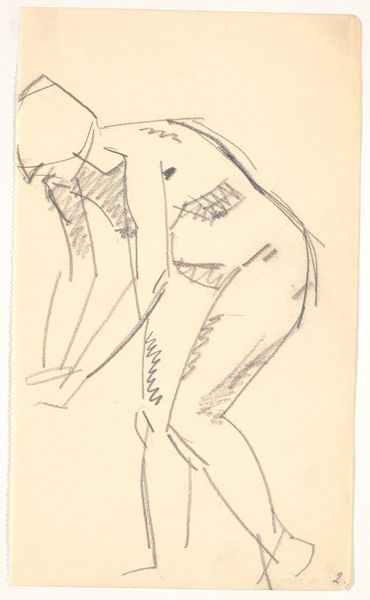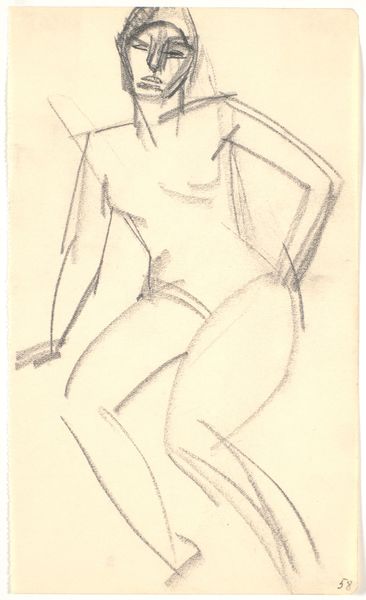
drawing, pencil
#
portrait
#
drawing
#
figuration
#
pencil
#
expressionism
Dimensions: 209 mm (height) x 124 mm (width) (bladmaal)
Curator: Here we have Karl Isakson’s "Standing Model, Seen from the Back," a pencil drawing likely created between 1914 and 1915. Editor: It feels very fragmented. Almost like looking at a statue that’s been pieced back together imperfectly. I am seeing angles and geometric shapes instead of rounded flesh. Curator: It is fascinating how Isakson breaks down the figure into its constituent parts. Look closely at the stark contrast between the densely shaded areas and the clean, decisive lines. What could have motivated his technique? Was he, perhaps, exploring a modernist aesthetic, influenced by early Cubism? The impact of industrial processes on the artistic creation, like graphite mining for the pencil used, really makes one ponder the art making processes. Editor: Interesting point. Given the time period, it’s hard not to see the influence of the war as well. World War I was raging. The fracturing, the angularity, almost suggests a world broken apart. Do you think the model he employs had a unique role during these troubling times? Was she, for instance, impacted by changing expectations in the labor force? Curator: Precisely. This work prompts an understanding about social forces and how this affects individual life. A figure is presented for the viewer, not as an individual, but simply as an element within an historical era defined by crisis and upheaval. Editor: Yes, and I find myself questioning, even, the gallery's display choice itself. Why this drawing, by this artist, in this particular exhibition? How does the curatorial framing shape our perception of the work and even its perceived value, from being merely a sketch on paper to a respected cultural artefact? Curator: Museums are institutions that can have strong affects when shaping the social, historical, and even material worth we attribute to artistic outputs. Editor: That’s right. Thinking about that, it prompts one to think more deeply about power, representation, and whose stories are being told here, and how they get told. Curator: A powerful illustration of the intertwined roles of materials, process, history, and social responsibility in our understanding of art. Editor: Absolutely, a valuable reflection.
Comments
No comments
Be the first to comment and join the conversation on the ultimate creative platform.
